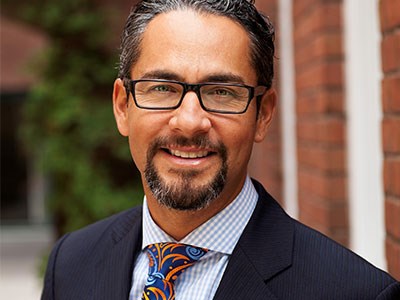Today, Aboriginal business is waking up from a long forced hiatus through the efforts of organizations such as The Canadian Council for Aboriginal Business (CCAB).
The organization was founded in 1984 by a small group of visionary business and community leaders committed to the full participation of Aboriginal people in Canada’s economy.
In fostering economic opportunities for Aboriginal people and businesses across Canada, CCAB, essentially works as a bridge between corporate Canada and Aboriginal business Canada.
Aboriginal self-employment is on the rise.
According to the 2006 Census, there are more than 37,000 First Nations, Inuit and Métis persons in Canada who have their own businesses, a significant increase of 85 percent since 1996.
Green energy businesses and projects are playing their part in the Aboriginal economy, whether through large energy developments such as the Lower Mattagami redevelopment – a joint venture between Ontario Power Generation and Moose Cree First Nation. The passing of the 2009 Renewable Energy Act incentive enabled Aboriginal businesses and communities to participate in the renewable energy sector.
Manitoulin Island’s M’Chigeeng First Nation’s Mother Earth Renewable Energy project (MERE) wind farm is the first independently 100 per cent First Nations-owned wind farm in Ontario, a feat not a lot of renewable energy participants have been able to do on their own as most have partnered to meet the demands of the sector.
The sector has taken off and industry partners have figured out how to work within the Green Energy and Green Economy Act.
Aboriginal businesses and communities have significant resource and labour challenges as they navigate the mine field of bureaucracy.
The Feed-in Tariff (FIT) program is an important component. The provincial government program purchases green energy at a fixed price for a fixed period of time (10 or 15 years).
The program has an ‘Aboriginal set aside’ that encourages solar and wind power companies to work with Aboriginal businesses and communities.
FIT has had a major impact on Aboriginal economic development corporations (EDCs) in Ontario. These EDCs are community-owned businesses run as a for-profit corporation at arm’s length from Chief and council.
Aboriginal community members are generally the shareholders and ultimate beneficiaries of EDC success.
Aboriginal businesses and communities need capacity from human resources to much-needed funding to pay for additional support. Multiple policy changes to the FIT program combined with the lack of adequate time to respond to government has put them behind on their timelines and projects, affecting their participation.
When the resources and capacity which builds real understanding and empowerment receive the attention and support they need great things can be done. The Lower Mattagami Hydroelectric Project, completed ahead of schedule and on budget, and now generating clean renewable power for Ontario, is just one example of what can be achieved.
The project is Northern Ontario’s largest hydroelectric project in 50 years. Now fully in service thanks to a unique partnership between the Moose Cree First Nation and Ontario Power Generation (OPG).
Six new units on the Lower Mattagami River will add 438 megawatts of greenhouse gas-free electricity –enough capacity to meet nearly three times the peak demand of Thunder Bay.
Moose Cree businesses have also been awarded over $300 million worth of sub- contracts since the project began four years ago. At peak construction, 1,800 people worked on the project, including over 250 First Nation and Métis workers
Aboriginal peoples know that the sun is a natural energy source, the wind and the rivers are natural energy sources.
There are huge opportunities for Aboriginal participation through sustainable growth. What really needs to happen is industry and government need to visit these communities and build the relationship based on inclusion and mutual respect for each other’s concerns and interests.
Aboriginal peoples are not averse to business anchored to the resource sector. They are business people who have had to make the most with a lot less. Times are changing. If business wants to work with Aboriginal peoples they should consider participating in the CCAB Progressive Aboriginal Relations Program (PAR), adding it to operational and strategic parameters. Business Canada needs to inform their internal corporate culture, it’s not just about the bottom line. It’s also about people, their communities, culture and traditions.




